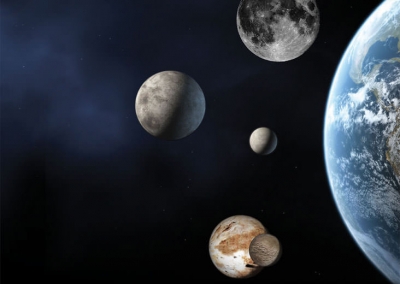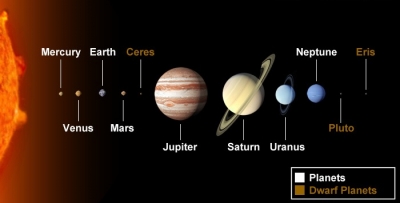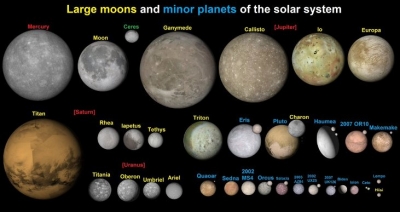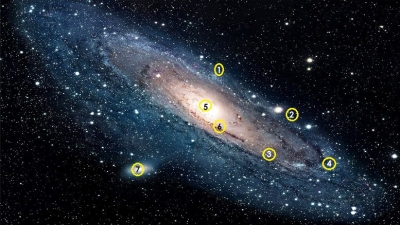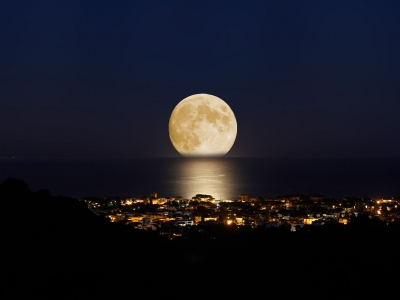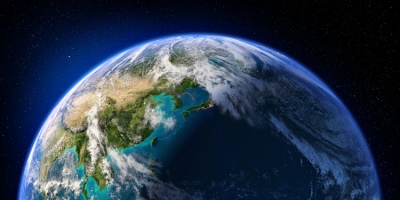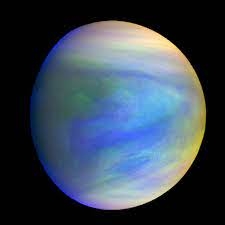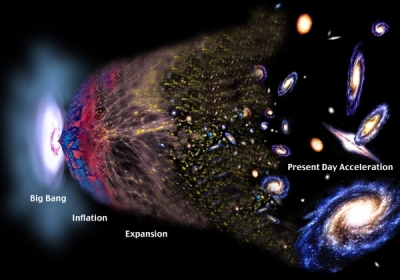
UNIVERSE
The Universe is everything that exists, from the smallest particle on Earth to the vast galaxies of deep space. Every part of it, including space and time, came into existence in the Big Bang - a huge explosion that occurred about 13.8 billion years ago. At that time, the Universe looked nothing like it does today, and it has been expanding, cooling, and changing ever since. The hydrogen and helium of the very young Universe formed stars, which in turn produced all the other elements in today’s Universe, including those that make Earth and everything on it, including you.
COSMIC BACKGROUND By looking at the heat left over from the Big Bang, known as the cosmic microwave background radiation, scientists are able to build up a picture of the early Universe. This image is a heat map of the Universe 380,000 years after the Big Bang. It shows that matter was not evenly distributed - the hotter areas (red) are more densely packed regions, where galaxies will form.
THE BIG BANG In the beginning, the Universe was unimaginably small, dense, and incredibly hot. Within a trillionth of a second it ballooned from being smaller than an atom to bigger than a galaxy. It was made of tiny particles of energy that turned to particles of matter. Within three minutes, the Universe was made almost entirely of the nuclei of hydrogen and helium atoms.
FORMATION OF GALAXIES Over millions of years, hydrogen and helium clumped together to form vast clouds. These broke into fragments, which collapsed under gravity and became stars. About one billion years after the Big Bang, a Universe of dwarf galaxies had formed. These collided, merged, and changed shape to become spiral and elliptical galaxies.
BIRTH OF THE SOLAR SYSTEM The Solar System formed from a cloud of gas and dust within the disc of the Milky Way galaxy. The spinning cloud, known as the solar nebula, collapsed in on itself under the force of gravity. It first formed a central sphere - the young Sun - and then the unused material surrounding the Sun formed the planets, moons, asteroids, and comets.
YOUNG MILKY WAY The Milky Way galaxy, the galaxy we live in, formed at the same time as the other galaxies. Not all of today’s Milky Way stars existed at that time. Since its beginning, the galaxy has produced stars that shine brightly for millions or billions of years, but that dies eventually. Their remains produce a new generation of stars.
FORMATION OF THE MOON Earth formed as ever-larger lumps of unused material collided and joined together. Young Earth was hit by a Mars-sized asteroid. Molten rock from the collision splashed into space. This formed a ring of rubble around Earth which clumped to form a large sphere – Earth’s Moon.
HOME PLANET Earth, the third rock planet from the Sun, is the only place in the Universe where life is known to exist. Life started in its oceans at least 3.7 billion years ago. Bacteria-like cells evolved into sea creatures, then land-based plants, and animals. Humans first walked on Earth about 1 million years ago.
Picture Credit : Google
